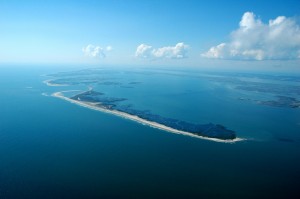In the final installment of Private Island News’ three-part special, guest author P.J Ryan – regular columnist at the excellent National Parks Traveler – treats us to an in depth look at the work of The Nature Conservancy – America’ leading conservation organization. Acclaimed for their work to protect ecologically important lands and waters, The Nature Conservancy has now protected more than 119 million acres of land and thousands of miles of rivers worldwide, including an array of private islands. This time P.J Ryan explains their role in wildlife conservation:
A Preserve For Wildlife
That is just fine with the birds. The 40,000-acre reserve supports over 250 species, some nesting, but most as vital resting and feeding stops in migration. The most famous of their migrants are a species of shore bird called the Whimbrel (Curlews), which migrates between the Canadian Arctic and Venezuela, with stops along the way, notably at the Virginia Coast Reserve.
TNC has pioneered in satellite banding, in which a 1.5-gram transmitter is attached to a Whimbrel and you can track them in real time. “Hope,” a female Whimbrel, recently made a 3,200-mile non-stop journey from The Virginia Coastal Reserve to Great Pond on St. Croix in the American Virgin Islands. If you like, you can track the Whimbrels by Googling up Virginia Coastal Reserve and following directions.
So what will be the ultimate fate of this unique private reserve? Well, I don’t know. Perhaps if a rising sea does not take the reserve, the TNC might sell it to the Department of Interior for addition to their nearby Assateague and Chincoteague barrier island holdings. We shall see.
This article originally appeared in the National Parks Traveler on October 17th 2012. Many thanks to the author, PJ Ryan, and the rest of the team at National Parks Traveler for their assistance.



